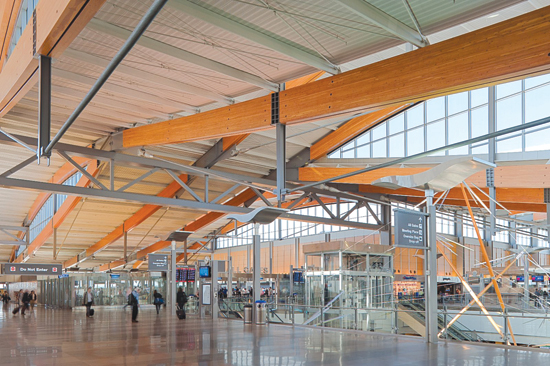Connection Solutions for Modern Wood Buildings
Learning Objectives:
- Describe the basic categories of mechanical and joinery connections for modern wood structures, and their application in both light wood-frame and heavy timber construction.
- Examine the wide range of connection options available today, from traditional joinery methods to widely used fasteners and connectors to the innovative proprietary connection systems that are enabling longer wood spans, higher walls and taller buildings.
- Apply practical and technical design guidance to ensure effective performance of connections in wood structures.
- Discuss key considerations for selection and installation of connections, for best performance and to avoid potential problems
Credits:
The use of wood as a structural material continues to grow far beyond traditional applications such as single-family homes and buildings up to four stories. Although recent attention has focused on the possibility of wood high-rises, wood's cost-effectiveness, versatility and light carbon footprint are already making it a material of choice for an expanding range of building types—from innovative public, educational and corporate structures that utilize mass timber products as their main architectural expression, to five-story (and higher) multi-family projects built with dimension lumber using long-established techniques. An essential element common to all of these buildings is effective connections.
In wood buildings, effective connections provide strength, stiffness, stability and ductility. They are critical to building performance—under regular loads, and especially during extreme events such as hurricanes and earthquakes. According to post-disaster surveys, structural failures during these events are often due to faults in connection design or assembly.
This continuing education course provides an overview of connection options for modern wood structures, both light wood-frame and heavy timber (see glossary on the next page). It covers mechanical connections—including dowel, shear and metal connector plates with integral teeth—and joinery connections, as well as proprietary connections that are in many ways supporting the current surge in innovative wood design. Proper selection and installation, and ways to avoid potential problems, are also discussed.
Wood Connection Basics
To determine the most appropriate connection for a given application, it is necessary to understand certain fundamentals, starting with the terminology. In this continuing education course, a connection encompasses all of the components that attach one part of a building element to another, be it wood to wood, wood to steel or wood to another material. Within the connection are connectors and/or fasteners. Metal hangers, corner plates, column bases and many other products fall within the category of connectors. Fasteners include (among others) nails, screws, timber rivets and bolts. These products do the ultimate work of fastening the elements of a connection, either with additional connectors (such as hangers) or on their own.

Photo: Nick Merrick © Hedrich Blessing, courtesy of Fentress Architects
Raleigh-Durham International Airport Terminal 2, Fentress Architects









